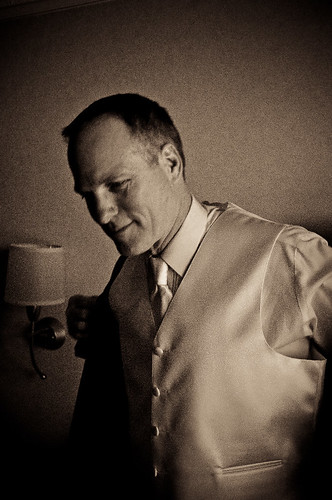 I am a huge fan of cinema, and film. I’ve always been drawn to the moving picture. I get so wrapped up in them, I could watch movies all day long. Two of my favorite movies were Godfather I & II. The drama, the suspense, the violence… And the production of the movie evoked those concepts in every aspect. What struck me from beginning to end was the lighting.
I am a huge fan of cinema, and film. I’ve always been drawn to the moving picture. I get so wrapped up in them, I could watch movies all day long. Two of my favorite movies were Godfather I & II. The drama, the suspense, the violence… And the production of the movie evoked those concepts in every aspect. What struck me from beginning to end was the lighting.
It was much better in G2, but the lighting was fascinating. Along with the music, the lighting was what created the mood of the scene; when someone was about to get off’d you knew it by the dark and ominous light and shadows that were present. I will never forget the scene where DeNiro as young Vito Corleone was hiding in the stairwell as the lightbulb flickered on and off just before he shot Don Fanucci. Masterful!!!
I tried to capture that same cinematic approach in some recent photographs. In the photo to the left, the hotel room was lit from just the window to my right casting an amazingly deep shadow on Brian’s side, he is a groom, preparing for his wedding. There is such depth and drama and emotion available to the viewer that would not be there if it were a simple photograph with flat lighting.
The use of dramatic lighting goes back to the Renaissance and a term called “Chiaroscuro.” It’s effectively the relation or contrast to light and dark. It was used significantly by artists like Rembrandt, Vermeer, Carvaggio, Goya and Rubens. There are many fine examples, but most people would recognize “Girl With The Pearl Earring” by Vermeer because of the recent movie (which is a little too chick flick-ish for me, sorry).
 The picture to the left is a Rembrandt entitled St. Peter in Prison. All light appears to be coming from one lights source. Possibly a skylight or oculus above. As simple of a painting as this appears to be, the use of shadow gives the painting such depth, life and clarity that had not existed before the Renaissance.
The picture to the left is a Rembrandt entitled St. Peter in Prison. All light appears to be coming from one lights source. Possibly a skylight or oculus above. As simple of a painting as this appears to be, the use of shadow gives the painting such depth, life and clarity that had not existed before the Renaissance.
Chiaroscuro, along with the use of perspective in drawings and paintings were two of the biggest impacts on the art world to come out of the Renaissance. It is certainly one of my favorite methods in art. I’m not sure when I learned the term or saw the technique, it could possibly be when I was researching a paper my senior year on the impact Picasso’s Cubist movement had on the art world in the early 20th century.
It’s taken on a re-birth for me. A personal renaissance if you will. I want to see everything in terms of light and shadow now. Not in a good vs evil sense, (I actually don’t believe in good or evil), but in an attempt to awaken senses in the viewers that weren’t there before. To create photos that come alive themselves and reach to people.
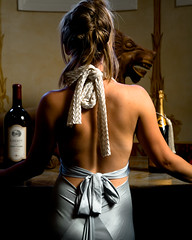 In this photo of the girl, I worked with a real film crew using continuous or “hot” lights. The crew was so good at what they did, I would just tell them what I wanted or show them a picture of what I was hoping to get and they knew exactly how to get it. All my career, I’ve always worked with natural light, so to see the ease in which they worked these lights and the results we got, I was quite surprised. This was accomplished with just one big light to the left that was bounced off the wall to the right, leaving a beautiful deep shadow on the left side of the models body.
In this photo of the girl, I worked with a real film crew using continuous or “hot” lights. The crew was so good at what they did, I would just tell them what I wanted or show them a picture of what I was hoping to get and they knew exactly how to get it. All my career, I’ve always worked with natural light, so to see the ease in which they worked these lights and the results we got, I was quite surprised. This was accomplished with just one big light to the left that was bounced off the wall to the right, leaving a beautiful deep shadow on the left side of the models body.
As a photographer you aren’t very good for your first ten years. And it may take additional time for you to find a real voice and a true focus. I think I am just now coming to that point. While my focus will always be on natural lighting, I am now very open to experimenting with lighting techniques to get the right look. It’s been 17-18 years since I first picked up a camera with serious intentions of producing art, and I’m finding that cinematic lighting, and chiaroscuro are now firmly in my vocabulary as a part of that voice. And I love where it’s leading me.
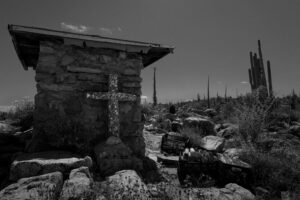
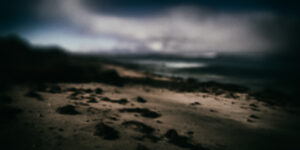
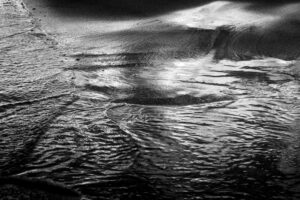
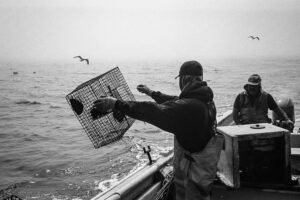
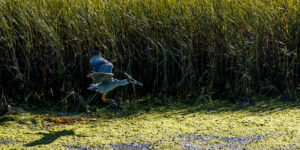
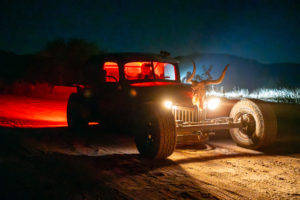
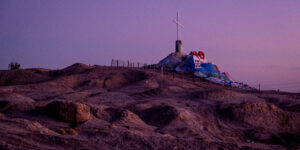
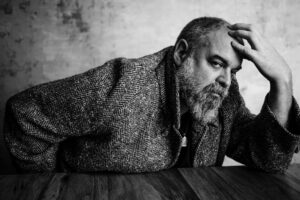
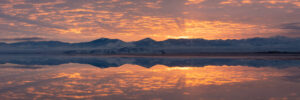
Leave a Reply